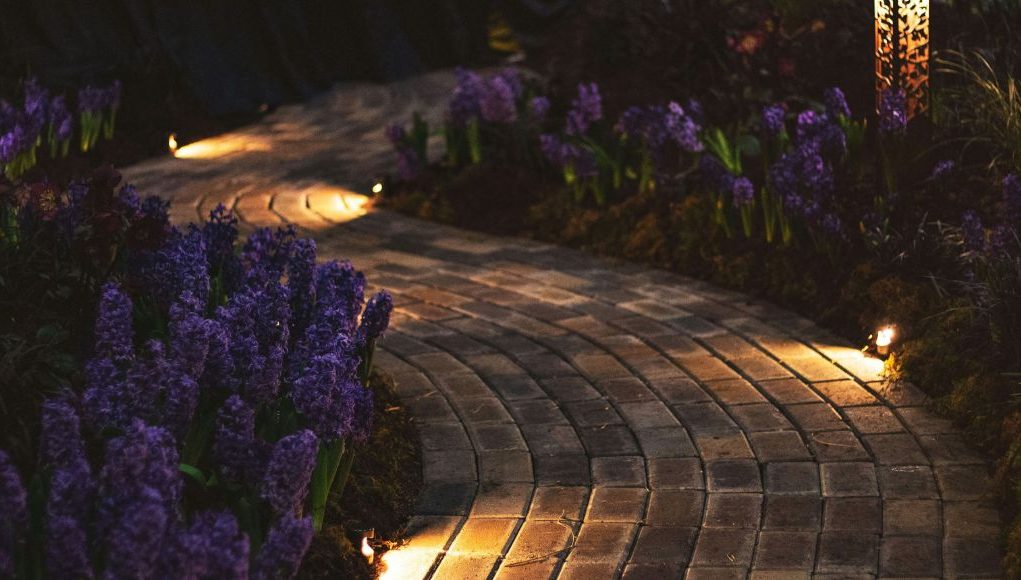Picture this: Your garden at dusk, instead of the gloomy and shadowy obscurity it is right now, is brimming with colour and vibrancy. The trees are glowing like they’re straight out of a fairytale, the flower beds shimmer like they’ve got secrets to spill, and the pathways call for an evening stroll, washed in a relaxing glow from both sides.
It might be a little dreamy (and maybe it is), but did you know it’s possible to pull off this enchanting vibe? How? Well, with LED garden spike lights, of course! These nifty little beams of brilliance are the unsung heroes of outdoor ambience.
And in this guide, we’re here to spill the tea on how you can make your garden pop and sparkle, doing nothing but adding a few garden spike lights. So let’s dig into (pun intended, you’ll see why) the quirky world of spike lights.
Why LED Garden Spike Lights?
For starters, the garden spike lights we’ll be talking about are LED. That alone speaks volumes as to why we need it: long-lasting, energy-efficient, and close-to-none maintenance. Additionally, did we mention that you can change the colour and adjust the temperature and brightness in some of these lights? But we’re getting ahead of ourselves here.
In summary, the biggest benefits of using LED spike lights for gardens are:
- Versatile — They can be used as outdoor spotlights to highlight landscape features or illuminate pathways, or provide other lighting.
- Adjustable — Easily twist or entirely remove from the ground if you need to reposition them.
- Stylish — Adds that undeniable glow (literally and figuratively) to your garden.
- Easy to install — No digging trenches or bribing electricians
LED spike lights are the ultimate garden multitaskers. You just [carefully] stab them to the ground and voila! Installation is halfway done. You’re almost ready to light up your trees, shrubs, flower beds, or paths.
These lights are also perfect for bolstering your security. A well-lit garden a day keeps the sneaky shadows away.
How to Position and Angle Spike Lights for Maximum Impact
Here’s one thing you need to remember: Installing a lot of lights does not equal a garden glow-up. Indeed, if you install numerous adjustable garden lights, the entire outdoors will be bright. Maybe even too bright. But if you step back and look at the whole picture, it’ll surely be a mess.
That’s why it’s crucial to plan how you will position and angle your lights. This will help you get maximum impact, while only using “enough” lights.
Where to Stick ‘Em: Know your garden’s VIPs—think trees, statues, fountains, trimmed hedges (fancy!), and pop your spike lights at their bases. If the garden feature is large, light it up from different angles to avoid creepy shadows.
For pathways, it’s the opposite. Line them up like loyal little soldiers, but this time pointing down to illuminate the walkways. You want to guide your guests, not blind them.
Angle is Everything: Most spike lights have adjustable heads. Point them upward to make trees look majestic or downward to keep paths safe and sassy. LED garden spike lights also come with different beam angles. Narrow beams (10 to 30 degrees) act as spotlights for precision lighting, while wider beams (60 degrees or so) are best for bathing your garden in a soft, dreamy glow.
Seasonal Swivel: Gardens change faster than the UK weather, so don’t be afraid to move your lights around. Maybe focus your lights on the autumn leaves in the fall, or let your evergreens take centre stage in spring.
Safety First, Sass Second: It’s easy to get lost focusing on the swag of your garden rather than the practical reasons why you’re installing the lights in the first place. Don’t fall for this trap! Place lights to illuminate steps or wonky terrain so your guests don’t trip and blame your roses.
Simple Lighting offers a range of garden spike lights that can withstand the UK’s weather, keeping your garden well-illuminated all year round.
Design Tips: Uplighting Trees and Flower Beds with Flair
Uplighting Trees
- For tall trees, use narrow beam angles to focus the light upward and highlight the trunk.
- If you’re looking to wash the canopy in light, go for wide-angled spike lights.
- Using two spike lights at opposite angles can cross-light the trunk and branches, creating a more theatrical effect.
- Use three spikes for a shadow-free performance.
- For smaller trees, try a wider beam with a warm white colour temperature (2700K–3000K). This will add a soft, inviting glow.
Flower Beds
- Position lights behind or beside the plants, aiming across them, rather than directly at them.
- Hide lights behind foliage for a mysterious, “where’s that glow coming from?” vibe.
- Low-level spike lights with wide beams give you a beautiful spread without harsh shadows.
Ambience Alchemy:
- Try mixing colour temperatures subtly to bring out different hues—cooler for blues and purples, warmer for reds and yellows.
- Mixing warm and neutral tones creates a balanced, inviting glow that gives candlelit dinner meets sci-fi chic vibes.
Sneaky Lighting:
Feeling like the lights are too cluttered, especially during the day?
- Choose finishes like sleek black to blend into your garden’s aesthetic.
- Tuck lights under leaves for a seamless look—because the only thing that should stand out is the glow.
Feature Plants or Sculptures
- Use a focused beam to highlight key features and place the light slightly off-centre for a natural shadow effect (because not everything needs to be shadow-free).
Cable Management and Waterproofing: Keeping It Tidy and Dry
No one wants a garden that looks like the aftermath of a cable monster attack. Also, this is the UK—we get weather. So don’t just chuck your spike lights in the mud and hope for the best.
Smart cable and water management equals long-lasting lighting.
Here’s how to keep your spike lights neat, safe, and ready to brave the UK’s famously soggy weather:
- Run wires along garden borders, under gravel, or use plastic conduit. Avoid trip hazards!
- Bury lightly. You don’t need to dig a trench—just a shallow hole under soil or mulch will do.
- Use IP65 or higher-rated fittings. These are built for British weather, from soggy Novembers to surprise April frosts.
- Waterproof junction boxes and cable connectors are your new best friends. They won’t fail you, so don’t take them for granted either.
- Use low-voltage spike lights (e.g., 12V Plug & Shine) for simpler, safer installations without an electrician.
Maintenance tip: After a big storm or frosty spell, give your lights a quick check for moisture or debris. They should be fine if they have high IP ratings, but it always pays off to be sure.
Pro Tip: For mains-powered setups, hire a qualified electrician to ensure safety and compliance with UK electrical codes.
Maintenance: Keeping Your Spike Lights Twinkling
Like everything else in life (or in your garden), if you want your lights to last a lifetime (it’s lifetime—since they’re LED, they can last up to 20,000 hours or more), you need to give them a bit of special attention.
Clean ‘Em Up: Wipe fixtures with a soft cloth and a gentle cleaner to keep them sparkling.
Seasonal Check-In: Check for loose spikes or cheeky cables trying to escape. Tighten and tuck as needed.
Reposition Like a Pro: As your garden grows (or you get a wild urge to redesign), nudge your lights to keep the magic alive.
And that’s it, really. Since you’re (ideally) using IP65-rated lights or higher, there’s really not much to do other than enjoy your lights!
[BANNER]
Final Thoughts
Your garden deserves more than to disappear into the darkness every time the sun sets. With a few well-placed garden spike lights, you can create a magical, layered landscape that’s as stunning at night as it is in the daylight (some might even argue it’s more in the former).
From spotlighting your prized sculpture to guiding guests down a brightly lit path, these LED wonders offer easy installation, eco-friendly operation, and an oh-so-stylish look. With a bit of clever positioning, some design flair, and our top-notch products, your garden will be the envy of the neighbourhood.
Ready to get glowing? Check out our full collection of garden spike lights and bring the spotlight home. Or outside. You get the idea.
Not sure what to do with your garden? These Outdoor Lighting Ideas for UK Homes and Gardens will guide you.














